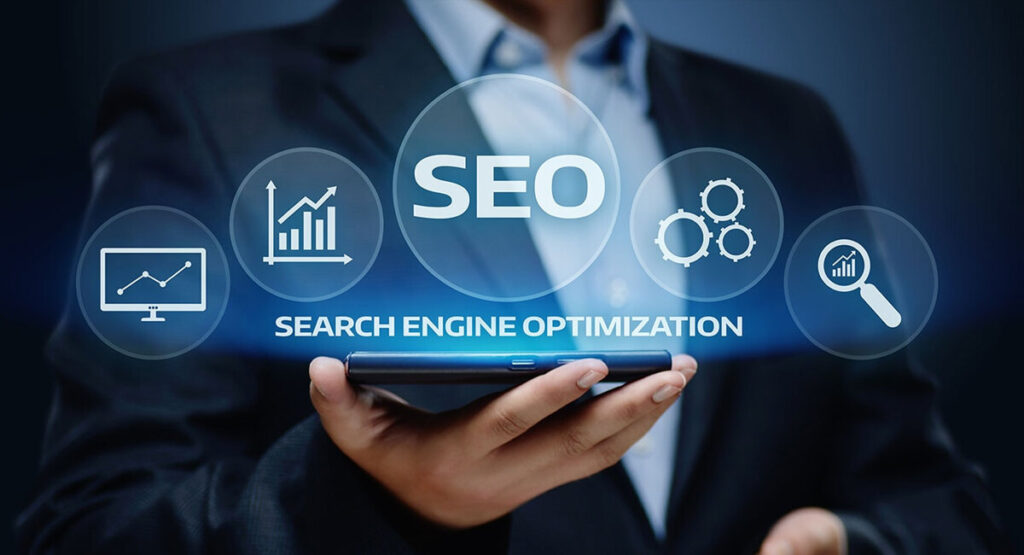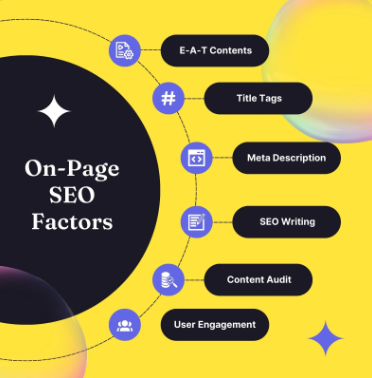
What is On Page SEO?
On-Page SEO refers to the optimization efforts you make directly within the content and structure of your website to improve its ranking on search engines like Google. It involves enhancing individual web pages so they are more attractive and relevant to both search engines and users. On-page SEO focuses on factors that are within your control, such as content quality, HTML tags, images, and website structure.
The goal of on-page SEO is to help search engines understand the content of your pages, and ensure that your site provides a positive, engaging experience for users. The higher the quality of both the content and technical elements on the page, the better the chances it has of ranking well on search engine results pages (SERPs).
Key Elements of On-Page SEO:
Title Tag:
- The title tag is one of the most important on-page SEO elements. It appears as the clickable headline in search engine results and is displayed at the top of browser tabs.
- Best Practices: Include your primary keyword towards the beginning, make it compelling to encourage clicks, and keep it under 60 characters to avoid truncation in search results.
Meta Description
- The meta description is a brief summary of the content of your page, appearing below the title tag in search engine results. While it doesn’t directly influence rankings, it plays a major role in improving the click-through rate (CTR).
- Best Practices: Keep it under 160 characters, include target keywords, and make it compelling to encourage users to click through to your site.
Header Tags (H1, H2, H3, etc.):
- Header tags organize your content and make it easier for both users and search engines to understand the structure of your page. The H1 tag should be reserved for the main page title, while H2, H3, etc. are used for subheadings.
- Best Practices: Ensure that your page includes only one H1 tag, which should describe the main topic. Use H2 and H3 tags for logical subsections, and where appropriate, incorporate keywords.
URL Structure:
- Clean, descriptive URLs improve user experience and help search engines better understand your content. Ideally, URLs should reflect the content and include relevant keywords.
- Best Practices: Keep URLs short, use hyphens to separate words (instead of underscores), and avoid using numbers or special characters.
- Example:
www.yoursite.com/seo-guideis much better thanwww.yoursite.com/page-id=12345.
Keyword Optimization:
- Incorporating relevant keywords into your content, titles, headers, and meta tags is essential for on-page SEO. However, it’s important to avoid keyword stuffing (unnatural repetition of keywords).
- Best Practices: Use target keywords naturally throughout your content, but prioritize readability and user experience. Also, include LSI (Latent Semantic Indexing) keywords—terms related to your main keyword.
Content Quality:
- High-quality, relevant, and informative content is crucial for both search engine ranking and user engagement. Content that answers users’ questions or provides value will likely rank better.
- Best Practices: Aim for content that is well-written, engaging, and answers the search intent of your target audience. Use a mix of text, images, and other media types to enhance user experience.
Internal Linking:
- Linking to other pages within your website helps search engines understand the structure and flow of your site. It also keeps visitors on your site longer by encouraging them to explore related content.
- Best Practices: Use relevant anchor text (the clickable text) to link to other pages on your site. For example, link to a related blog post or a product page when appropriate.

Mobile-Friendliness:
- With the rise of mobile device usage, search engines prioritize mobile-friendly websites. Ensuring your website is responsive and provides a good user experience on mobile devices is an essential part of on-page SEO.
- Best Practices: Test your site for mobile usability using tools like Google Mobile-Friendly Test, and make adjustments to ensure it’s responsive across all screen sizes.
Page Load Speed:
- Search engines like Google prioritize fast-loading websites, as they provide a better user experience. A slow website can negatively impact your rankings and cause visitors to leave your site.
- Best Practices: Use tools like Google PageSpeed Insights to check your website’s speed and implement fixes like image optimization, browser caching, and minimizing JavaScript and CSS.
User Experience (UX):
- UX is a critical factor for on-page SEO. A site that’s easy to navigate, visually appealing, and intuitive encourages visitors to stay longer and engage with your content.
- Best Practices: Focus on clear, concise navigation, easy-to-read typography, and a clean design. Ensure your site is user-friendly on both desktop and mobile devices.
Why On-Page SEO is Important:
- Search Engine Understanding: On-page SEO helps search engines understand what your page is about and how it fits into the broader context of other content on the web.
- Better User Experience: A well-optimized page is more user-friendly, which can increase engagement, reduce bounce rates, and lead to higher conversion rates.
- Improved Rankings: Properly optimizing your pages increases the likelihood of ranking higher on search engines, making it easier for users to find your content.
- Competitive Advantage: Well-optimized pages help you compete more effectively with other websites in your niche, particularly those that have already optimized their on-page elements.
Final Thoughts:
On-page SEO is a foundational part of a successful SEO strategy. By optimizing elements like content, keywords, URLs, headers, and images, you can improve the relevance of your content and make it easier for search engines to index and rank your pages. In turn, this increases your chances of attracting more traffic, improving your user experience, and ultimately achieving your business goals.
